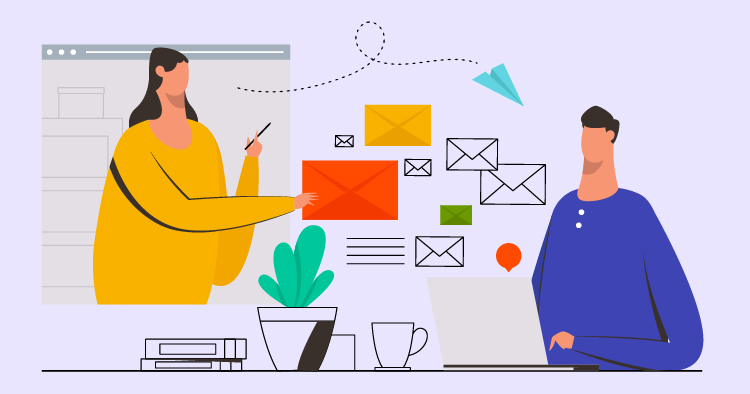Email marketing remains a cornerstone of successful digital strategies, offering unparalleled reach and conversion potential. Understanding how to construct an effective email marketing funnel is crucial for beginners. This guide will walk you through the basics, from capturing leads to nurturing them into loyal customers. By exploring the key stages and strategies involved in building an email marketing funnel, you’ll gain insights into how to segment your audience, craft compelling content, and measure your success. Whether a small business owner or a budding marketer, mastering the email marketing funnel is vital to achieving your engagement and sales goals.
Understanding the Email Marketing Funnel
An email marketing funnel is like a pathway that guides potential customers step by step. It starts with making them aware of your brand and ends with them taking action—like buying your product. The goal is to build a relationship with your customers by sending them helpful content, offers, or information that keeps them interested.
You can improve your funnel even more as you learn more about what your customers like and how they behave. This ensures your marketing stays on point and speaks to your audience. Plus, email marketing funnels are great because they can be automated. Once you set them up, they can run by themselves, which saves you time and effort.
Building an Effective Funnel
To build an effective funnel, you’ll want to:
1. Attract subscribers with enticing offers or valuable content.
2. Welcome them with a friendly email that sets the stage for what’s to come.
3. Keep them engaged with regular updates, helpful tips, or exclusive deals.
4. Encourage them to take action, whether buying a product or signing up for a webinar.
Struggling with Digital marketing? Book Your Free Strategy Session!
- 30-Minutes Session
- Expert Insights
- Data-Driven approach
- Optimized Strategies for Your Goals
5. Follow up after they’ve taken action to keep the relationship going.
Remember, the key is to provide value at every step. This keeps people interested and moving through your funnel until they’re ready to purchase. It’s not just about selling; it’s about creating a lasting connection with your audience.
Benefits of the Email Marketing Funnel
Email marketing funnels are incredibly useful for streamlining the process that takes a potential customer from initial interest to purchase. This structured approach helps to clarify the steps they need to take, making it easier for them to move forward without getting lost or confused. When the path is clear, fewer people drop out of the process, leading to more sales and a healthier bottom line for your business.
One of the standout features of email marketing is the ability to personalize messages. Modern email tools let you divide your audience into segments based on their preferences, behaviors, and more. This means you can send messages that resonate with each group, making your emails more engaging. When recipients feel you’re speaking directly, they’re more likely to pay attention and act on your messages.
A thoughtfully designed email funnel does more than push for sales—it keeps customers interested at every stage. By sharing relevant information, tips, and insights, you help build a relationship. This ongoing engagement is critical for immediate sales and establishing a loyal customer base that will return to you in the future.
One of the most practical aspects of using an email marketing funnel is the ability to track and measure your success. With analytics, you can see how many people open your emails, click on links, and ultimately make a purchase. This feedback is essential for figuring out what’s working well and what might need some tweaking. By understanding your performance, you can make informed decisions to enhance your email marketing strategy and improve your results over time.
Building an Effective Email Marketing Funnel
Creating an email marketing funnel starts with understanding how a customer discovers your brand and decides to buy your product or service. By mapping out these steps, you can tailor your emails to naturally and informatively guide potential customers down the purchase path.
The first step in any email marketing funnel is to gather potential customers, known as leads. You can attract leads through various methods, such as engaging with your audience on social media, creating informative blog posts, or collaborating with other businesses. The goal is to create a group of people interested in what you offer and willing to learn more through your emails.
To communicate with your leads, you need their email addresses. Opt-in forms are the tools you use to collect this information. Make sure these forms are easy to find on your website, especially on pages that receive a lot of visits. The key is to make the sign-up process as quick and straightforward as possible so more visitors will give you their details.
Struggling with Digital marketing? Book Your Free Strategy Session!
- 30-Minutes Session
- Expert Insights
- Data-Driven approach
- Optimized Strategies for Your Goals
With so many email marketing tools available, it’s essential to pick one that aligns with your business goals. Look for a tool that provides automation, saves you time, has analytics to track your success, and has a user-friendly interface. These features help you send the right messages at the right time and measure the effectiveness of your campaigns.
Creating a Compelling Lead Magnet
To convince people to sign up for your emails, offer them something valuable. This is known as a lead magnet and can be anything from a free e-book to a discount code or exclusive access to content. Whatever you choose, ensure it’s something that your audience will find irresistible.
When someone joins your email list, start the relationship on the right foot with a series of welcome emails. These should introduce your brand, explain the benefits of subscribing, and set expectations for future communications. This series is your chance to make a solid first impression and lay the foundation for a lasting relationship.
Your current customers shouldn’t be left out of your email marketing efforts. They already know your brand, so tailor your messages to deepen that relationship. Send them special offers, company updates, or exclusive content to keep them interested and encourage repeat business.
Remember, an effective email marketing funnel isn’t just about selling but building relationships. By providing value at every stage of the customer journey, you can turn leads into loyal customers and advocates for your brand.
Understanding Your Business Goals
When working on your email marketing funnel, it’s essential to keep your eyes on the prize: your business goals. These could be anything from boosting sales, expanding your email list, and ramping up customer interaction. Whatever your targets are, your funnel should be a ladder leading straight to them. It’s not just about sending emails; it’s about sending emails with a purpose.
Using a one-size-fits-all template might seem like a quick fix for your email strategy, but it won’t give you the desired results. Your business is unique, and your email funnel should be too. Tailor it to showcase what’s unique about your brand, the goods you’re selling, and who you’re selling to. When your emails feel personal, they’re more likely to resonate with your audience.
It’s tempting to think that the more emails you send, the better. But bombarding your audience with messages can do more harm than good. What matters is the quality of your emails. Each one should be a gem—something your subscribers are happy to see in their inbox because it’s precisely what they need. It’s not about how often you email them but how well you email them.
To understand if your email funnel is working, you must measure its success. That means setting clear, quantifiable goals. Maybe you want to see a certain percentage of people opening your emails, or you’re aiming for several clicks or sales. These figures are like signposts telling you whether you’re on the right track or it’s time to switch things up.
An email marketing funnel isn’t just a good idea; it’s a powerful tool for connecting with your audience and turning potential customers into loyal fans. By understanding the benefits, learning the nuts and bolts of creating one, and learning tricks to improve it, you’ll be setting yourself up for success in email marketing.
Final Thoughts
As you create an effective email marketing funnel, remember that patience and persistence are your allies. The process requires continuous testing, learning, and refining. Keep your audience’s needs at the forefront, personalize your communication, and always provide value. Doing so will convert leads into customers and build lasting relationships that foster brand loyalty. You cannot overstate the power of a well-structured email marketing funnel.



